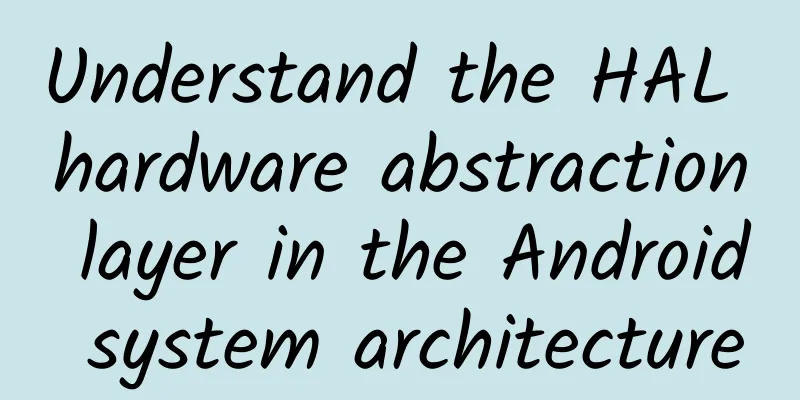Understand the HAL hardware abstraction layer in the Android system architecture

Introduction to HALHAL refers to the Hardware Abstraction Layer, which is an abstract interface between the operating system and the hardware. The function of HAL is to abstract the functions of the hardware into a unified interface so that the upper-level software can access the hardware by calling these interfaces without having to care about the details of the specific hardware. In the Android system , the existence of HAL allows hardware from different manufacturers to be uniformly called by upper-level applications, thereby improving the compatibility and portability of the system. HAL can also help developers develop applications more conveniently, because they do not need to write different drivers for different hardware, but can access the hardware by calling the unified HAL interface. Android's HAL plays an extremely important role, making the Android system more flexible and extensible. System Architecture
The entire architecture is shown in the figure below: picture This architecture makes the Android system scalable and flexible, while also providing developers with a wealth of APIs and tools to develop various types of applications. HAL layer exampleSuppose we want to implement a simple HAL layer interface for a sensor device: This is a simple HAL layer interface example for a sensor device, which defines the structure of the sensor module and the sensor polling device, and contains function pointers for activating sensors, setting delays, and polling sensor data. In actual HAL layer development, it is also necessary to implement the specific function codes corresponding to these function pointers and register them with the hardware module of the HAL layer. The above is a simple example to demonstrate how to define the HAL layer interface of the sensor device. In actual development, it is necessary to define and implement the corresponding interface according to the specific hardware device and function. |
>>: Let's talk about the use of RemoteViews in Android applications
Recommend
The quality of domestic batteries is worrying and false labeling is common. How can they shoulder the responsibility of the new energy vehicle industry?
WM Motor, which is about to deliver in September,...
Why do some people eat but never gain weight? Here are some tips to help you develop a "thin body"!
The most enviable physique is definitely the one ...
Can home appliances labeled “Level 1 low energy consumption” really save electricity and money?
I don't know when it started, but a colorful ...
Moji Weather, which has made a lot of money by betting on advertising, has opened up a new way to make money
[51CTO.com original article] A friend’s travel re...
GSMA: Mobile Economy Report 2020
According to the "2020 Mobile Economy Report...
Hot search! Is canceling your phone number equivalent to betraying yourself? The truth is...
A few days ago, the topic "Canceling your mo...
Competitive analysis of Keep, Hot Fitness, and FitTime (yellow)
In 2016, the State Council issued a national fitn...
What are the functions of the Guangzhou city group buying mini program? How much does it cost to create a group buying mini program?
It has been more than 5 years since the release o...
Do you like to eat cold dishes in summer? Be careful! Eating these vegetables raw can easily lead to parasite infection!
In the hot summer, the weather is getting hotter ...
The actor's handwritten letter went viral! If you want to practice good handwriting, you can do this
In the past two days, the handwriting of Wang Any...
A guide to avoiding pitfalls when placing advertising campaigns for selling goods via short video live streaming!
Today I’m going to share with you a guide to avoi...
Six key words to interpret the 2016 mobile phone industry. All you care about is here
2016 is coming to an end: I was penniless on New ...
The secret of Kuaishou Express Ads
As the saying goes, "The food and fodder mus...
Query the price of joining Zhangbei Luggage Mini Program. How much is the price of joining Zhangbei Luggage Mini Program?
For entrepreneurs, although mini program developm...









